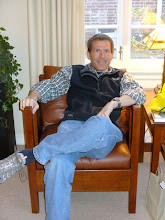Mormon Scare
Headlines from the Pew Report
The Pew Research Center report on Religion is out. http://www.pewforum.org/…/americas-changing-religious-land…/ There will be talk about what this says about
Mormons.
The numbers for Mormons are small (which makes sense for a
group that comprises less than 2% of the U.S. population). The survey sampled approximately
35,000 U.S. adults. Of that number, 664 were Mormon, about 26% in Utah (315
interviews, approximately 55% Mormon), about 9% in Idaho (320 interviews,
approximately 19% Mormon), and many of the rest in Arizona, Montana, Nevada, Oregon,
Washington, and Wyoming (the states where more than 2% are Mormon). Altogether,
these states account for about 55% of the Mormons reporting, with the rest
spread throughout the U.S. in larger states with smaller percentage numbers of
Mormons.
Overall, the small number of Mormons means that the “margin
of error” for numbers about Mormons is +/- 4.9 percentage points.[1]
Mormons Decline as
Share of U.S. Population
1.7% in 2007 became 1.6% in 2014.
But this could be flat or up or down, within the margin of
error. And could be flat or an increase or decrease in absolute numbers (given
that population grew from 227 million to 245 million).
Comparison might be made to Jews, who are reported as a larger
percent of U.S. population (1.7% became 1.9%), where there is no obvious reason
for faster-than-population growth. But all of these numbers are small and could
be reversed within the margins of error.
On the other hand, the numbers for Protestants, Catholics
and Unaffiliated are much larger (absolute numbers, percentages, and amount of
change). For Protestants 51.3% became 46.5%, for Catholics 23.9% became 20.8%,
and for Unaffiliated 16.1% became 22.8%.
The story is mostly that Mormons are not like Protestants,
Catholics or Unaffiliated.
One Third of Mormons
Leave
1.7% of U.S. adults identify themselves as raised Mormon.
About 1/3 of that number, or 0.6% of U.S. adults, identify themselves as having
left. A similar number (0.5% of U.S. adults) identify themselves as having
entered or become Mormon. The drops and adds account for the 1.6% who identify
as Mormon currently. To me this is the most revealing and surprising set of
numbers about Mormons in the survey, with large enough effects that there is
probably something there.
Where do we go? Of the third who left, more than half (58%
of 36%) identify themselves as Unaffiliated. The rest are about 17% Evangelical
and the balance spread across Protestant, Catholic and Other.
Where are we coming from? Of the 31% of adults identifying
as Mormon who grew up in a different tradition, slightly more come from a
Catholic background that any other, but the numbers are fairly evenly spread
among Evangelical (19%), Mainstream Protestant (23%), Catholic (29%), and Unaffiliated
(26%), with Other (3%) trailing.
Losing the Blacks
Mormons in the U.S. are overwhelmingly White (non-Hispanic)
at 86% in 2007 and 85% in 2014. By comparison, Christians overall (including
Mormons) were 71% White in 2007 and 66% White in 2014.
The largest non-White group among Mormons is Hispanic (7% in
2007 and 8% in 2014). Black numbers declined, from 3% in 2007 to 1% in 2014. But
I find these numbers too small to make much of a story out of. To put this in
perspective, Pew talked with 664 adults who reported that they were Mormon and these
numbers suggest that 6 or 7 of the 664 were black.
Losing the Women
In 2007 self-identified Mormons were 44% men and 56% women. In
2014 the numbers were 46% men and 54% women.
The change (from 46% men to 44% men) is within the margin of
error. In other words, 44% men means that 292 of the 664 Mormons interviewed
were men, but 4.9% more (the “margin of error) would be 306 men which would be
46% of the total.
On the other hand, there does seem to be a consistent story
for Mormons and Christians generally, with large and reliable numbers, that
there are more women than men self-reporting as religious.
Mormon Marriages Down
(and Down More than Average for Christians)
66% of adult Mormons were married in 2014. The number was
71% in 2007. The difference is mostly in the number never married (12% in 2007 up
to 19% in 2014). By comparison, among all Christians (including Mormons) the
married comprised 56% in 2007 and 52% in 2014. The largest change was among the
Unaffiliated, dropping from 46% married in 2007 to 37% married in 2014.
The marriage rate for Mormons continues to be higher than any
other group. The second highest group was Evangelical Christians, at 59% in
2007 and 55% in 2014. However, the change supports the long observed phenomenon
that Mormon marriage patterns follow the general population but with a
significant lag.
[1] I
am still looking for Pew’s definition of “margin of error”. It is common but
not universal to use that phrase for a 95% confidence interval, or +/1 2
standard deviations.


